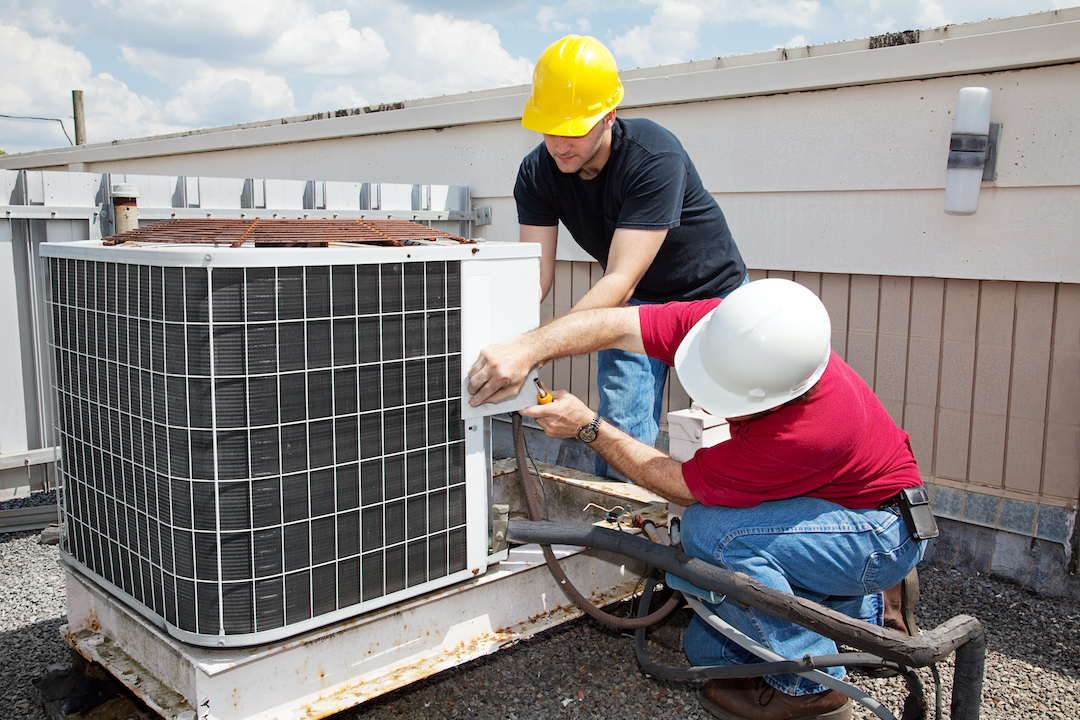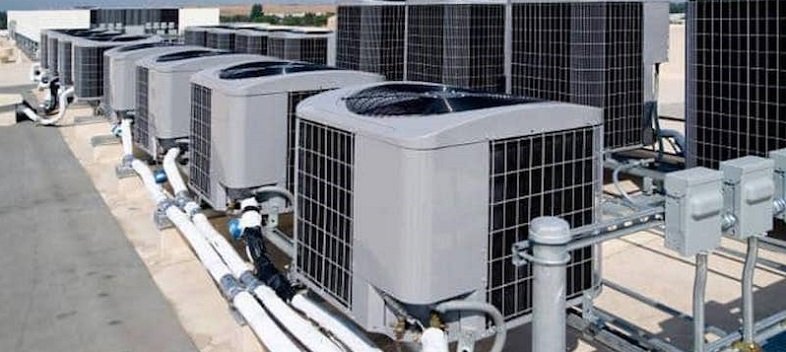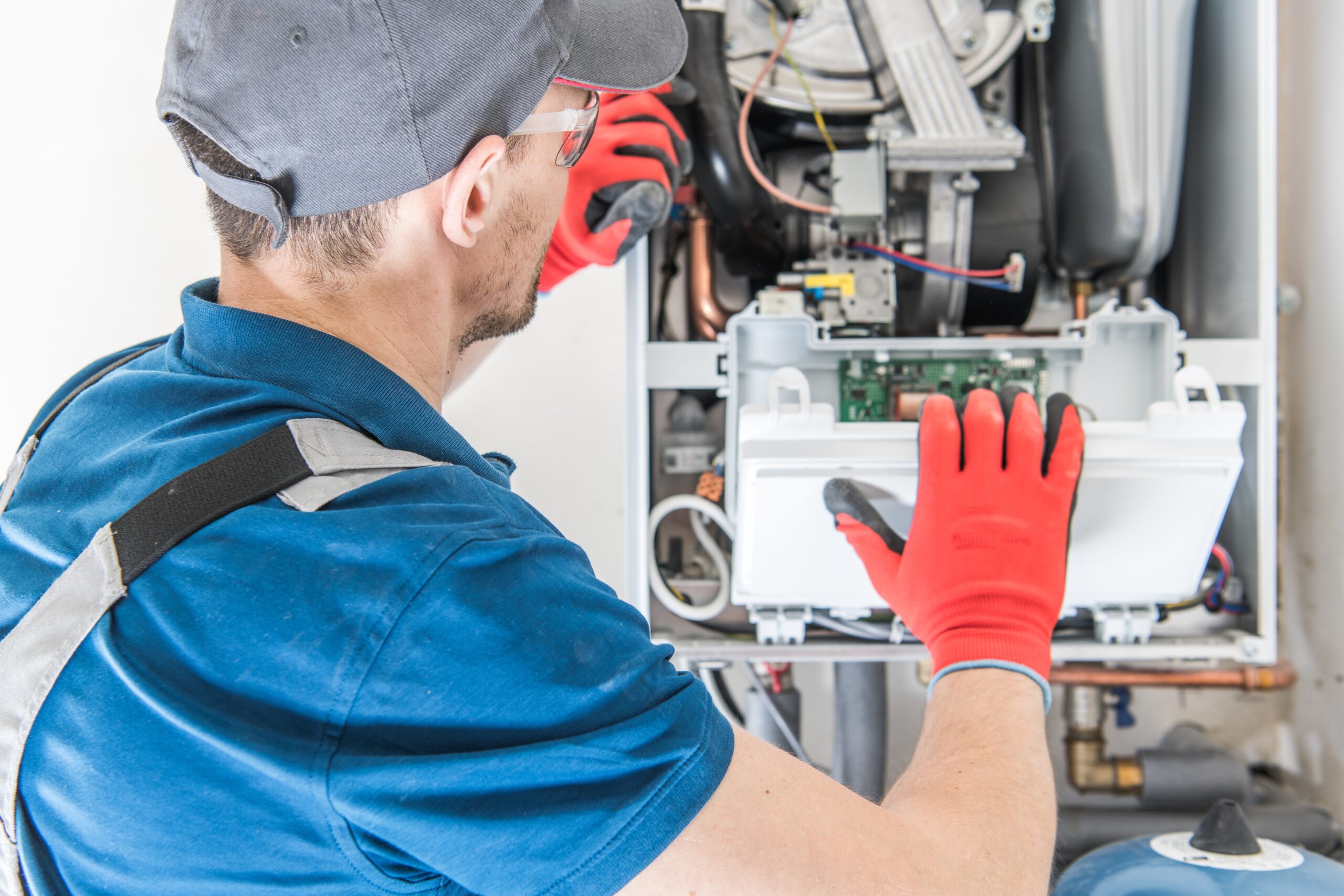How a Warm Pump and Heating System Work With Each Other to Optimize Your Home's Heating Efficiency
Recognizing just how a heatpump and furnace work with each other is important for homeowners looking for efficient home heating options. Each system has its staminas, giving a well balanced technique to home convenience. The heatpump masters moderate temperature levels, while the heater delivers quick heat throughout severe cold. This synergy not just lowers power prices yet likewise improves the life-span of both devices. What aspects affect this partnership, and just how can house owners optimize their advantages?
Understanding Heat Pumps: Exactly How They Function
Several individuals may be unknown with their inner functions, heat pumps play a necessary role in modern home heating systems. These devices operate by transferring heat from one location to another, using the concepts of thermodynamics. In cooler months, a heatpump removes warmth from the outside air, ground, or water, and transfers it inside your home to warm the home. On the other hand, throughout warmer months, it can reverse the procedure, working as an air conditioning unit by expelling heat from inside to the outside.Heat pumps include an evaporator, expansion, condenser, and compressor shutoff. The cooling agent within the system absorbs heat as it vaporizes at low temperature levels and pressures. The compressor after that raises the stress and temperature of the cooling agent, permitting it to launch warmth as it condenses. This efficient procedure can greatly minimize energy usage compared to typical home heating methods, making warm pumps a sustainable option for environment control in homes.
The Role of Heating Systems in Home Heating
Heaters play an important function in home heating by supplying a trusted resource of heat throughout the cooler months. They run by generating heat through combustion or electrical resistance, dispersing it throughout the home by means of air ducts or glowing systems. The effectiveness of a heater is frequently determined by its Yearly Fuel Utilization Efficiency (AFUE) rating, which suggests just how successfully the system transforms gas into heat.Furnaces can use numerous energy sources, consisting of gas, lp, electrical energy, or oil, allowing home owners to pick one of the most appropriate choice for their needs. Unlike heatpump, which might battle in severe chilly, furnaces preserve constant efficiency, making sure that interior temperatures remain comfortable regardless of outdoor conditions. Furthermore, modern heating systems usually come furnished with sophisticated innovation, such as variable-speed blowers and smart thermostats, boosting their performance and responsiveness. This flexibility makes heating systems an essential element in all-inclusive home heating methods.

Benefits of Using Both Systems With Each Other
Integrating the strengths of both heating systems and warmth pumps can result in an extra effective and reliable home heating solution. Making use of both systems enables homeowners to take advantage of the heat pump's power performance during milder temperature levels while counting on the furnace for even more extreme cold conditions. This twin strategy can substantially decrease power expenses, as heatpump eat less electricity than traditional home heating methods when temperature levels are moderate.Additionally, utilizing both systems together can enhance convenience levels in the home. Heatpump can offer constant, also heating, while heating systems can quickly increase ambient temperature levels when required. The integration of both systems can expand the life-span of devices by lowering wear and tear on each device, as they share the work. Eventually, property owners can enjoy a balanced, cost-effective home heating service that adjusts flawlessly to varying weather condition conditions, guaranteeing a cozy and welcoming home throughout the cold weather.
How Warm Pumps and Furnaces Complement Each Various Other
They create a corresponding heating system that optimizes efficiency and comfort when property owners incorporate heat pumps and heaters. Heatpump run by moving warmth from the outdoors air or ground, making them very reliable in moderate environments. They stand out during milder temperature levels, providing economical heating. Conversely, heaters generate warm with combustion or electrical resistance, supplying strong, prompt heat during extreme cold conditions.The combination of these two systems permits for vibrant modifications based on temperature variations. During warmer months or milder winter months days, the warm pump can take the lead, preserving power and reducing costs. As temperatures drop, the heater can perfectly involve, guaranteeing constant heat throughout the home. This harmony not just optimizes power usage but likewise boosts the lifespan of both systems, as each device operates within its suitable efficiency array. With each other, they develop a well balanced environment that adapts to varying climate needs.
Maximizing Performance: Tips for Homeowners
Home owners can enhance their home heating effectiveness with numerous functional approaches. Establishing a normal maintenance schedule, incorporating wise thermostat modern technology, and applying efficient insulation and sealing services are key steps. These actions not only improve comfort yet likewise reduce energy costs.
Regular Upkeep Schedule
To assure optimal home heating effectiveness, establishing a routine maintenance schedule is necessary for any type of home. Property owners should focus on routine evaluations of both warmth pumps and furnaces to determine peak performance. This includes altering air filters each to three months, as clogged up filters can substantially decrease effectiveness. Furthermore, scheduling expert maintenance at least yearly enables specialists to identify and address potential problems prior to they rise. Home owners must likewise cleanse the warm pump's outdoor unit to stop particles accumulation that can prevent airflow. By adhering to a routine maintenance timetable, property owners not just improve their furnace' effectiveness but additionally expand their life-span, bring about higher convenience and reduced power costs throughout the cooler months.
Smart Thermostat Integration
Integrating a smart thermostat right into a home heating system can greatly enhance energy effectiveness, especially as it enables specific control over temperature level settings. These tools can find out the home owner's timetable and preferences, automatically readjusting the temperature to optimize convenience while lessening power use. For circumstances, they can lower home heating throughout times when the home Check This Out is vacant, minimizing unnecessary intake. Lots of wise thermostats likewise provide real-time power usage information, making it possible for homeowners to make informed decisions concerning their heating behaviors. Additionally, remote gain access to via smartphone apps permits individuals to adjust setups from anywhere, guaranteeing the home is warm upon return. On the whole, smart thermostat combination not only enhances comfort but substantially adds to power cost savings and efficiency.
Insulation and Sealing Solutions
Smart thermostats play an essential function in power effectiveness, yet their performance can be considerably improved by correct insulation and securing services. Property owners should prioritize protecting wall surfaces, floorings, and attic rooms to decrease heat loss. High-quality insulation materials, such as spray foam or fiberglass, can considerably boost thermal resistance. Furthermore, securing voids around home windows, doors, and air ducts stops cool air infiltration and warmth escape. Weatherstripping and caulking are reliable approaches for attending to these leaks - ductless mini splits. Routine evaluations for air leaks, in addition to using blower door examinations, can assist identify problem areas. By purchasing insulation and securing, homeowners can enhance the performance of their heater, eventually causing reduced energy intake and reduced energy costs
Typical Misconceptions Concerning Warmth Pumps and Furnaces
What misconceptions surround heatpump and heating systems? Lots of individuals wrongly believe that warm pumps are ineffective in chillier environments. Actually, contemporary warm pumps are created to operate effectively also in reduced temperatures, giving trusted heating throughout winter. Another typical misconception is that heating systems are always much more effective than heatpump. Nevertheless, this relies on the particular power resources and performance ratings of the units concerned. Some may also think that using both systems simultaneously is unnecessary, but actually, this combination can maximize home heating effectiveness, especially during extreme weather condition conditions. Furthermore, individuals typically assume that heatpump need consistent upkeep, when truthfully, they have similar upkeep requires to typical home heating systems. By debunking these misconceptions, homeowners can make even more informed decisions concerning their heating choices, ultimately resulting in improved comfort and power effectiveness in their homes.
Maintenance Considerations for Combined Systems

Regularly Asked Inquiries
Can Warm Pumps Job Successfully in Extremely Cold Climates?
Heatpump can have a hard time in exceptionally cold environments as a result of minimized effectiveness and warmth extraction constraints. Nonetheless, developments in modern technology have actually resulted in versions created for far better efficiency in such problems, improving their practicality in severe settings.
The Length Of Time Do Warm Pumps and Furnaces Generally Last?
Warmth pumps generally last 15 to twenty years, while furnaces have a life-span of 15 to 30 years. Routine Your Domain Name maintenance can prolong their longevity, ensuring reliable operation and reducing the need for premature replacements.

What Is the Typical Price of Putting Up Both Equipments?
The average expense of installing both a heatpump and a heater normally ranges between $5,000 to $10,000 - heat pump service. Aspects influencing this price include system dimension, setup complexity, and regional labor prices
Exist Tax Obligation Rewards for Utilizing Energy-Efficient Home Heating Solutions?
Several property owners ask about tax obligation rewards for energy-efficient heating unit. Various government and state programs frequently offer discounts or debts, motivating the adoption of sustainable innovations to reduce power usage and advertise environmental obligation.
Just how Do I Select the Right Size Warm Pump and Heating System?
Selecting the best size heatpump and heater includes calculating the home's square video footage, thinking about insulation top quality, and examining regional climate. Consulting a professional can assure suitable system performance and power effectiveness based on specific needs. heat pump installation ooltewah tn. Comprehending just how a warm pump and furnace job together is essential for property owners seeking reliable home heating options. In colder months, a warmth pump essences heat from the outside air, ground, or water, and transfers it indoors to heat the living room. When property owners incorporate warmth pumps and heaters, they create a corresponding heating system that makes best use of performance and convenience. Heat pumps run by moving heat from the outdoors air or ground, making them very reliable in moderate environments. Warm pumps can have a hard time in extremely chilly climates due to decreased effectiveness and warmth removal restrictions